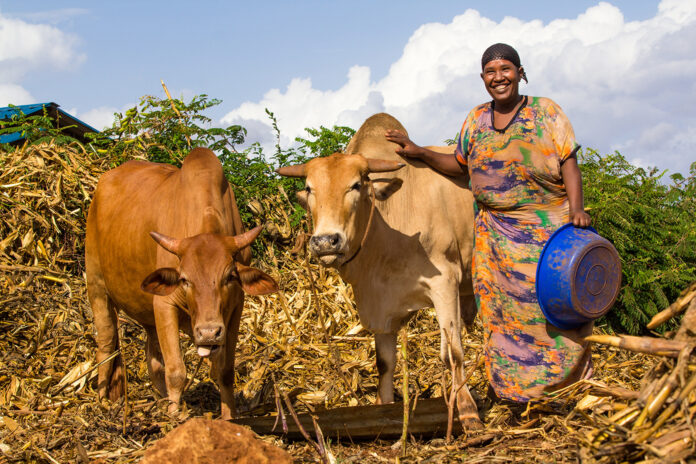When it comes to farming in Kenya and Africa, land is one of the biggest problems we have unlike in the West. The problem is farmers have no clear land ownership rights. This means that they cannot pledge the property as collateral for financing to scale their farms. Young professionals and the youth are starting to see agribusiness as a viable venture. This is a good thing, but for those looking to farm, land is one of the first things you have to figure out especially for the urbanites.
So, what farming ventures can be done profitably on a ¼ acre of land? Here are 8 different types of farming you can consider.
1) Mushroom farming
Mushroom farming is not very old in Kenya. Cultivation used to be a complex affair but things have been made way simpler for farmers from the numerous research, training, and workshops. There have also been workarounds in the process and introduction of more tolerant varieties like Oyster mushrooms.
They do not require a huge piece of land compared to other crops. A quarter acre of land is enough to have an incubation house and a cropping house. You can make use of the vertical space too since mushrooms don’t grow tall. If you have 1000 bags in one cropping room, you can get close to 2 tons of button mushrooms going at an average of Ksh600/kg. This translates to about Ksh1.2 million. Mushrooms are sold to supermarkets, hotels and households. Recently there has been demand coming from Uganda. The demand is big at 1200 tons a year according to NAFIS where only half of it is met. Dominance is by large scale producers mainly exporting. With proper marketing this is one profitable venture and you’ll require less capital in comparison to others.
2) Garlic farming
Garlic is a high value horticultural crop. It is part of the onion family. Garlic is loved for its flavor in food and health benefits. It does well in its optimum conditions and good care. Garlic takes about 6 months to harvest.
A ¼ acre of land can give you about 2.5 tons yield of garlic bulb selling at a farm gate price of around Ksh150/kg. There is demand from both the local and export market.
Garlic requires adequate skills, training and good research to be successful. You’ll need to understand the local varieties, get certified seeds, good soil and best environment. Growing organic garlic is preferred especially for the export market.
3) Fish farming
Kenyans used to depend on the lakes and rivers for fish, but not anymore. Commercial fish farming has taken off and this time fish are reared in ponds. The African cat fish, nile tilapia and the rainbow trout are very popular. It is not hard to start a fish farm if you have the right information.
You can have 100 meter square ponds fit in a quarter acre land for breeding. The main costs in fish farming are; labor, polythene, feeds and the fingerlings. The ponds can also be made of fibre, concrete and plastic but these will cost more. You need to consider; climate, suitable land, fish species, pond design, feeds and the market. The demand for fish has been going up with more people consuming white meat locally. Fish sells for about Ksh500/kg and for ¼ an acre you can have a few thousands of them. The cat fish is fast growing and can weigh over 15kgs. Tilapia can be harvested when they weigh 250g. By use of modern fish farming techniques, production can be maximized.
4) Poultry
Poultry involves keeping of chicken, which can be; Indigenous(Kienyeji), layers, or broilers. Improved indigenous breeds are also available to farmers. Other birds can also be reared like quail and guinea fowl but chicken is more popular in Kenya taking 98%. Chicken eggs are consumed more than meat in Kenya. Chicken meat has hotels as their biggest market.
The appropriate structures can fit in a ¼ acre and make a profitable business. Make sure the housing is up to recommended standards. There is a need to focus on marketing your produce by targeting large hotels, supermarkets, schools, export, etc. The indigenous (kienyeji) chicken can be sold for around Ksh1000 in the market.
When doing poultry farming, attention to details and proper knowledge is a must for a successful venture.
5) Passion fruit farming
Passion fruit is one of the biggest fruit exports by Kenya. The local market demand is also quite high. They are consumed fresh or the pulp is used for making juice and other products e.g. yoghurt. There are two popular types in Kenya; the purple variety which grows in high altitudes and the yellow variety which has higher yields and is disease resistant.
A ¼ acre can grow about 350 passion plants or more. One plant with good care can produce 10–15 kg of fruits in a year. Passion fruits sell for Ksh40–100/kg while grade 1 for export can go for around Ksh70–100/kg.
Passion fruit farming has become popular in Kenya, for example the North rift farmers are moving away from maize to passion which has better returns, cheaper to maintain and ready market going as far as Uganda.
The passion plant is a climber; this means there can be creative ways of maximizing on the little space you have.








